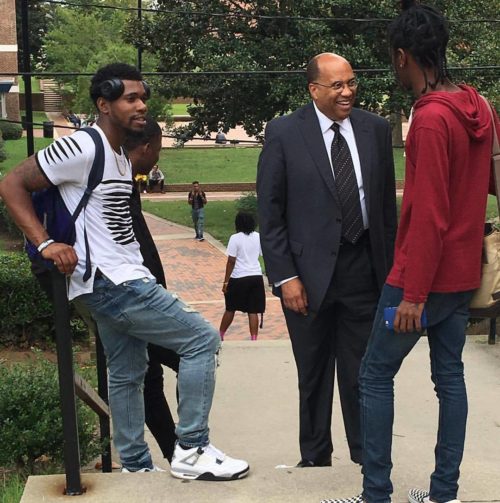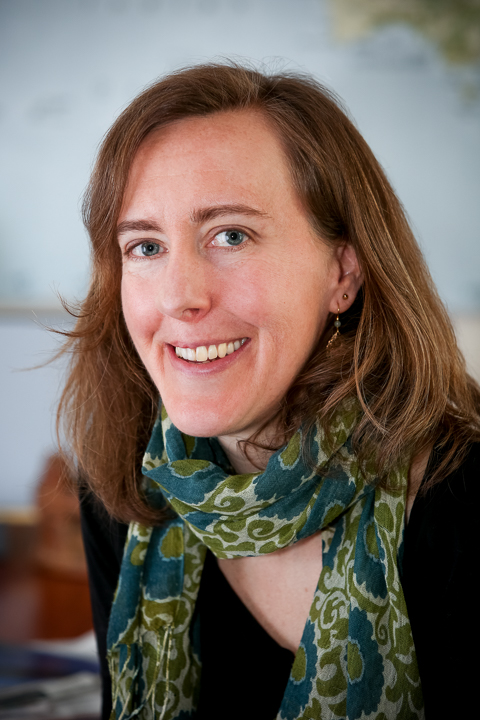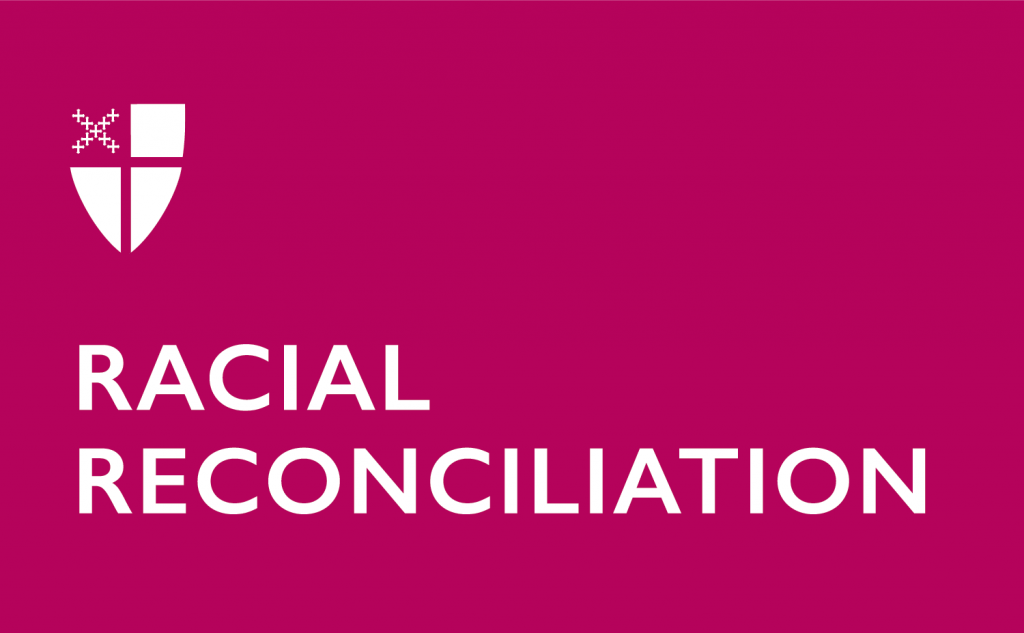Beyond Relevant: The Episcopal Church’s Historically Black Colleges and Universities
Episcopalians, schools and supporters are working to renew, strengthen ties
By Heather Beasley Doyle

When Skylar Mitchell arrived at Spelman College, an all-female historically black school in Atlanta, Georgia, she found herself in an unfamiliar environment. “I had never been around only black people before,” she said last year, as her sophomore year drew to a close. “I didn’t like that I didn’t know how to be around black women my age on a social scale,” she said. “Now that I’ve been here, I love being around my people.”
As Mitchell wrote in her essay “Why I Chose a Historically Black College,” featured in the New York Times in April, the high-achieving comparative women’s studies major had set her sights on a big-name traditionally white institution—not one of the country’s roughly 100 historically black colleges and universities (HBCUs). Mitchell ultimately chose Spelman, the top-ranked HBCU, over the likes of Swarthmore and other well-known predominantly white institutions (PWIs), with no regrets. “I just feel more relaxed,” she said, compared to her previous majority-white high school. “Those first couple of days when I was at Spelman — I had never felt like that before.”
While Spelman has Baptist rather than Episcopal roots, Mitchell’s story might resonate with the Rev. Martini Shaw, rector of the African Episcopal Church of St. Thomas in Philadelphia. Shaw is chair of the Episcopal Church’s Executive Council Committee on HBCUs. Talking with HBCU graduates, “hearing their testimonies, their witness about how those schools made such an impact and such a difference in their lives” has persuaded him that post-secondary schools dedicated to African-Americans remain essential in American society.
The Episcopal Church’s Executive Council established the HBCU committee at its June meeting to continue the work begun by a task force, formed in 2015.
Two historically black colleges and universities have deep Episcopal Church roots
Voorhees College, in Denmark, South Carolina, and Saint Augustine’s University, in Raleigh, North Carolina, are the only two Episcopal-affiliated historically black colleges and universities left in the United States. At one point, the Episcopal Church supported 11 HBCUs in Louisiana, Mississippi, North Carolina, South Carolina, Tennessee, Texas and Virginia. These schools fell under the auspices of the American Church Institute for Negroes (ACIN; later known as the American Church Institute). An additional school in Texas “received funds from ACIN but was never officially brought under its oversight,” according to Episcopal Church archives. By 1976, only three Episcopal-supported black colleges remained: Voorhees, Saint Augustine’s and Saint Paul’s College in Lawrenceville, Virginia. That year, a resolution to continue funding the colleges passed at General Convention.
In 2013, however, Saint Paul’s folded. The school’s financial problems started with the 2008 economic downturn, according to the Rev. Jamie Callaway, general secretary of the Colleges and Universities of the Anglican Communion and the Association of Episcopal Colleges. Moreover, “the federal government tightened the rules on federal loan programs [including Pell grants],” said Callaway, who is also a member of the HBCU committee. The changes affected many schools, but “for Saint Paul’s, it was, unfortunately, fatal,” he added.
Saint Paul’s wasn’t unique in its vulnerability to economic swings and government cuts; this is the case for HBCUs in general. Their mission is to keep post-secondary education affordable and accessible for all students, especially low-income students (between 70 and 75 percent of HBCU students receive need-based financial assistance in the form of Pell grants), those who would be the first in their family to attend college and students without access to five-star academic resources.
“These schools aren’t only for black students,” said Brian K. Bridges, vice president of research and membership engagement at the United Negro College Fund (UNCF). In 1976, 15 percent of HBCU students were not black; by 2014, that figure had risen to 21 percent. And the diversity goes beyond race. “[HBCUs] really do represent a cross-section of our society; you can’t categorize them into one group of students,” said Annette Buchanan, national president of the Union of Black Episcopalians (UBE).
Given the small percentage of students who attend HBCUs, it’s noteworthy that the schools are “among the top feeders of black students to graduate schools and professional schools, particularly in STEM fields,” according to Felecia Commodore, assistant professor of higher education at Old Dominion University. Statistics back this up: According to the National Science Foundation, between 2010 and 2014, a notable portion of African-American doctoral degree recipients had earned their bachelor’s degrees at HBCUs, from slightly less than 20 percent in the social sciences to nearly 50 percent in the agricultural sciences.
Congrats to Biology major Malika Wood ’18 for receiving a travel award to attend The Graduate School @ Penn State’s STEM Open House program! pic.twitter.com/NuTWaYgxV2
— Saint Augustine’s University (@SAU_News) October 3, 2017
While those figures may fluctuate, a 2015 Gallup poll shows that black graduates of HBCUs are “more likely than black graduates of other colleges to be thriving … particularly in their financial and purpose well-being.” This point goes to the heart of Mitchell’s experience at Spelman.
“Some will excel at Ivy League colleges,” Shaw said, and “others will do much better academically in a much smaller setting where they feel connected and supported by a community that looks more like them.” HBCUs are smaller, on average, than their traditionally white counterparts. The largest HBCUs’ student bodies number about 10,000. St. Augustine’s University has 1,100 students, while Voorhees College has some 480 students.
As cozy and advantageous as a small college might be, Voorhees President W. Franklin Evans wants to boost his school’s enrollment. “Last August, enrollment was at its lowest,” Evans said. The decline in enrollment—at a time when many HBCUs have seen their admissions spike—made him conclude that Voorhees isn’t “as family-oriented and as nurturing as we should be.”
Inaugurated as the school’s president in April, Evans said he is “reimagining Voorhees; it’s a different school of thought now.” In addition to boosting enrollment, his goals include reaching out to non-traditional students, re-establishing off-campus sites, boosting alumni donations and ensuring the perceived luster of Voorhees students in employers’ eyes.
Becoming more family-oriented at a school where “at least 85 percent” of the students are the first generation in their family to go to college means something specific to Evans. “We’ve got to do a better job of educating the parents and caregivers,” about navigating the college years, including the financial aid process.
He hopes, too, for more of a connection with the Episcopal Church. “I didn’t find the church as warm and kind and fuzzy as I thought it would be,” Evans said. Complicating matters for Voorhees has been the 2012 departure of the leaders and several members in many Diocese of South Carolina congregations during a dispute over biblical authority and theology, primarily centered on the full inclusion of LGBT people in the life of the church. “That, in and of itself, is an issue that has an effect on Voorhees,” said Evans, because several churches of those congregations were supportive of the college.
While Saint Augustine’s doesn’t have that particular complication, the school is also focused on increasing enrollment and alumni giving, according to the school’s president since 2015, Everett B. Ward. He’s looking to the council committee as his school moves forward with its efforts. “To have that level of support will be very helpful,” Ward said.
That support, in fact, could help prevent the loss of another Episcopal-affiliated HBCU. “We’re aware of the decline of small, church-affiliated HBCUs in general,” said UNCF’s Bridges. “This is a trend that’s happening nationally.” And while people have bemoaned the loss of HBCUs nationally, and four schools have lost accreditation, “over the past 15 years, only St. Paul’s has closed,” Bridges said.
Strenghtening the church’s connection
Looking back at the Episcopal Church’s relationship with its historically black schools, “one thing is very obvious,” said Shaw. “Yes, they were Episcopal HBCUs. Yes, there were dollars and funds allocated, but I’m not sure how much involvement beyond that there was.”
Now, he said, is the time to support Voorhees and St. Augustine’s with more than just money—while underscoring that more money always helps. Under the auspices of the new HBCU committee, at least two consultants are working on development and strategic planning, “in direct contact with the presidents, staff and boards of both schools,” Shaw said. He also noted that Episcopal HBCUs once had a healthy percentage of Episcopal students, but that is no longer the case.
The UBE’s Buchanan noted the same trend. “What we’ve heard and seen is that young black Episcopalians are not aware of the two Episcopal HBCUs,” she said. To raise awareness, UBE added a new page, Support Our HBCUs, to its website this year.
This isn’t the beginning of the 49-year-old organization’s support of Episcopal-affiliated HBCUs, though. “We’ve had a relationship with them throughout our history,” Buchanan said.
Buchanan sees Voorhees and St. Augustine’s as “the church’s largest outreach to the black community.” She said the church could strengthen this particular ministry, though. “I think the church’s results have been mixed,” she said. “The funding for HBCUs has remained the same over the past few years — every year, it’s been a struggle to get funding from the church for [them].”
Budgets matter
The General Convention allocated $1,645,000 for HBCUs in its 2016-2018 budget, along with $400,000 in “education enterprise grants” to be shared by the two schools. That combination increases the church’s total HBCU funding to $2,045,000, which is $20,000 more than in 2013-2015, when the allocation was intended for Voorhees, Saint Augustine’s and Saint Paul’s. The current HBCU-earmarked total is $205,000 less than the 2010-2012 allocation.
At the same time, for the past 18 months, the Episcopal Church’s Development Office has been working to help Saint Augustine’s and Voorhees. With the support of the Executive Council, the presiding bishop and the new committee on HBCU, the development office’s goal is “to increase public awareness [of HBCUs] within the Episcopal Church, to strengthen fundraising for the schools and to provide connections to other Episcopal organizations that support HBCUs,” said Director of Development Tara Elgin Holley. One manifestation of this has been the formation by members of Christ Church in Raleigh of a “legacy council” for Saint Augustine’s. The council’s goal is to help spread the word about Saint Augustine’s. Three other local churches have also expressed interest in joining the group.
The development office’s efforts are part of the Episcopal Church’s racial reconciliation and justice effort, Building Beloved Community, Elgin Holley said. A summary of Building Beloved Community includes partnerships with HBCUs as part of a churchwide initiative to “repair the breach in society and institutions.”
Fighting for funding isn’t unique to Episcopal HBCUs; it’s woven into the HBCU community’s story at a national level, according to Marybeth Gasman, professor of higher education at the University of Pennsylvania and director of the Penn Center for Minority-Serving Institutions. “HBCUs just had to fight to exist,” said Gasman. “Funding has continued to be really, really difficult; if they’re public, they’re not funded at the level of majority institutions.”
HBCUs’ endowments also lag behind those of their traditionally white counterparts’. Top HBCU Spelman draws upon a $346.9 million endowment, whereas top-ranked TWI Princeton’s endowment is $22.7 billion strong. The same goes for alumni giving. Voorhees College doesn’t have the kind of donors that support so many of the country’s TWIs, according to Evans. “We’re lucky if we have alums who are willing to give $200,” he said.
Dr. Evans and @VoorheesCollege students at Luncheon. #voorheescollege #scholarships #elizabethevelynwright #metroatlalumni pic.twitter.com/LR5NAwgzfA
— Voorhees College (@VoorheesCollege) September 23, 2017
Earlier this year, President Trump invited HBCU presidents to the Oval Office as he signed an executive order “to promote excellence and innovation” at HBCUs. As part of the order, the Initiative on HBCUs moved from the Department of Education into the White House’s purview.
“Certainly, the president’s call to meet with the HBCU presidents was a good thing, as long as it was not simply a photo opportunity; time will tell,” said Shaw. The Initiative on HBCUs’ move “causes a little anxiety,” he added. The University of Pennsylvania’s Gasman agrees: “The money is in the Department of Education. It’s not in the Executive Branch. I don’t know why you would want the chickens in the house with the fox.”
Ultimately, the Trump administration’s intentions seem mixed, at best. While the Department of Education has reinstated year-round Pell grants, the Pell grant surplus could potentially be cut by more than $3 billion in the FY 2018 federal budget. And in May, the president called into question the constitutionality of the HBCU Capital Financing Program, comments at odds with February’s pro-HBCU talk and Executive Order.
In this sense, more than 150 years after HBCUs first arose, the schools continue to explain their relevance, to justify their very existence. HBCUs’ relevance remains a topic even though “we’ve seen upticks in enrollment in the past four or five years,” according to Gasman. HBCUs are seen “as a safe space for black students, so that they do not have to deal with microaggressions.” (Microagressions are comments or actions that subtly and sometimes unconsciously or unintentionally expresses a prejudiced attitude toward a member of a marginalized group such as a racial minority.)
Last fall’s HBCU enrollment spike in the wake of student protests at PWIs (including the University of Missouri and Yale University) drew national attention. “There are some very interesting racial dynamics going on right now in our country … coupled with the Black Lives Matter movement,” said the United Negro College Fund’s Bridges. Even students for whom finances were not a major consideration, Mitchell among them, value a place where their blackness isn’t an issue.
Given all of this, the HBCU community wants to change the subject from relevance. Commodore, of Old Dominion, and Gasman co-edited “Opportunities and Challenges of Historically Black Colleges and Universities: A Student Perspective” because “we wanted to push some of the conversations that are happening in HBCU research,” Commodore said. Those conversations included LGBTQ issues and the influx of Latino and Asian students into historically black schools. Moreover, “we really need to start talking about what are the governance challenges at HBCUs,” she said.
Buchanan pointed out the importance of leadership, not only in keeping HBCUs as healthy as possible, but also in acknowledging that a school is more than its administration. “Various leadership with various skill levels” have shepherded HBCUs, Buchanan said. “And some were not very good at all. There’s a tendency to paint a whole institution [in leadership’s light], when they really didn’t know how to manage their school.”
Bridges sounded positive about recent changes in HBCU leadership. “There’s been a new cadre of presidents coming in who are doing things in some new ways,” he said. Many of them are younger, in their late 30s and 40s, equipped with more “dynamic” marketing techniques. “The question for me is how do [HBCUs] exist, given the new racial dynamics of today, the new way of delivering education?” Bridges said. “How do they retool themselves to keep helping large numbers of low-income, academically unprepared students?”
Voorhees and Saint Augstine’s are among the HBCUs with new presidents, both seemingly eager to shift gears at their respective schools and to learn from past mistakes. At the same time, the Episcopal Church is dedicating time, people and resources to study HBCUs while supporting them in new ways, signaling that the schools should be more than just a line item in the church’s budget.
This path forward, which many credit to Presiding Bishop Michael Curry, is not only forward-looking; it harkens back to the beginnings of Episcopal HBCUs. “The founding of these colleges was the beachhead of the Episcopal Church’s work for racial reconciliation after the Civil War,” said Callaway. “Instead of just going forward, the church was saying, ‘how can we move forward and change things?’”

— Heather Beasley Doyle is a freelance journalist based in Massachusetts.

